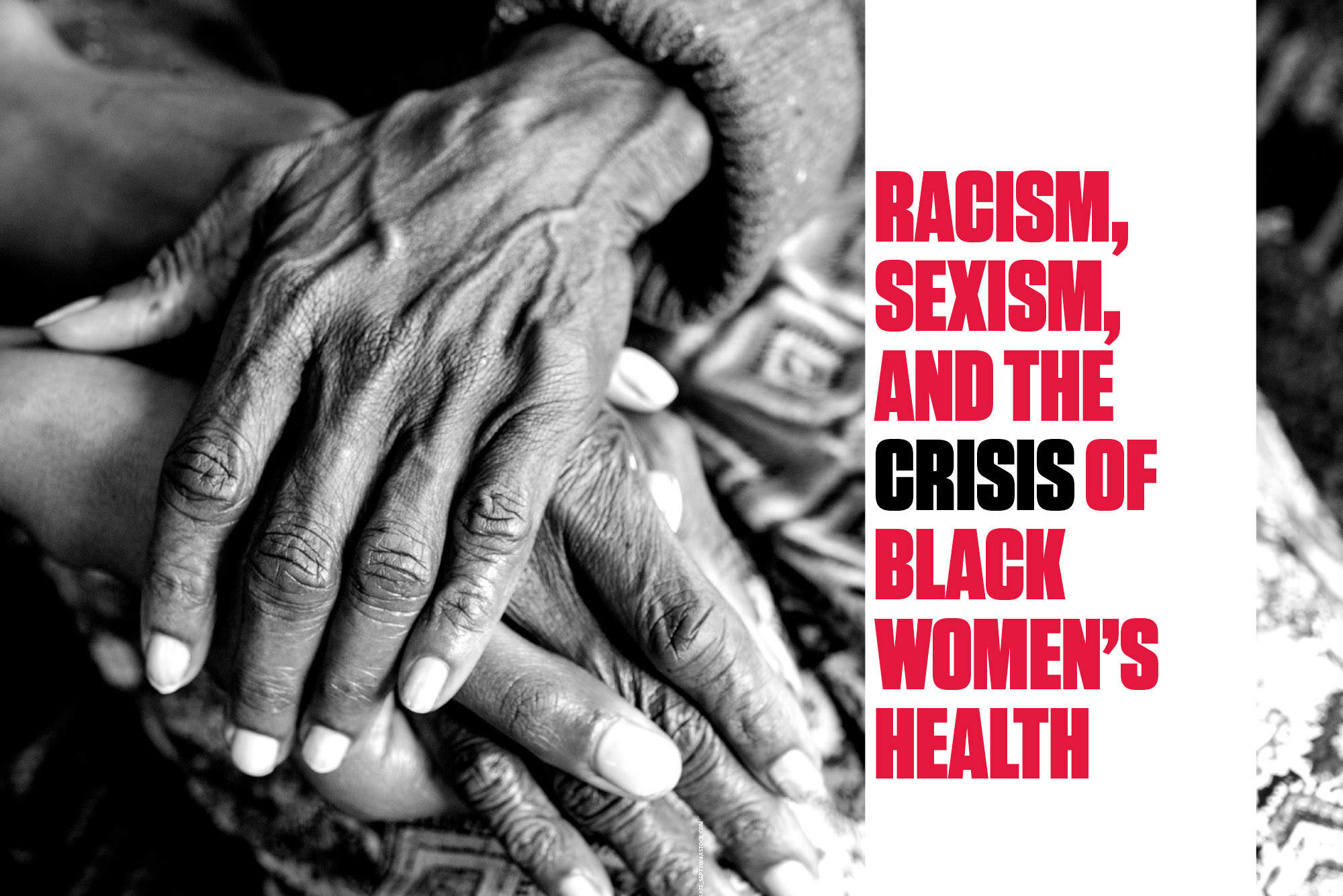Report on Economic Disparities and Sustainable Development Goals
Introduction: The Gender and Racial Pay Gap as a Barrier to Sustainable Development
The observance of Black Women’s Equal Pay Day on July 10 highlights a significant impediment to achieving the Sustainable Development Goals (SDGs), particularly those concerning equality and economic justice. The date signifies how far into a new year an African American woman must work to match the earnings of a non-Hispanic white male from the previous year, underscoring a persistent economic disparity that undermines inclusive growth.
Analysis of Pay Inequity in Relation to SDG 5 and SDG 8
The current wage gap directly contravenes the principles of SDG 5 (Gender Equality) and SDG 8 (Decent Work and Economic Growth). The disparity represents a failure to achieve full and productive employment and equal pay for work of equal value for all.
- Statistical data from Equal Pay Today reveals that African American women earn approximately 64 cents for every dollar earned by their non-Hispanic white male counterparts.
- This gap violates the core tenets of SDG 5, which seeks to end all forms of discrimination against women, and SDG 8.5, which explicitly calls for equal pay for work of equal value.
Key structural factors contributing to this gap include:
- Occupational Segregation: The concentration of women of color in lower-paying job sectors.
- Lack of Pay Transparency: Opaque salary structures that enable and hide discriminatory pay practices.
- Systemic Discrimination: Pervasive biases in hiring, promotion, and compensation decisions.
The Impact of Economic Policy on SDG 10: Reduced Inequalities
Legislative and fiscal policies play a critical role in either exacerbating or mitigating economic disparities, directly impacting progress toward SDG 10 (Reduced Inequalities). Advocacy groups, including the National Association for Women, have expressed concern that certain legislative actions and budget bills can widen the pay gap by reducing social support systems. Such policies risk undermining Target 10.2, which aims to empower and promote the social and economic inclusion of all, irrespective of race or gender, and Target 10.3, which calls for the elimination of discriminatory policies and practices.
Policy Recommendations for Advancing Sustainable Development
To address these inequities and accelerate progress on the SDGs, advocates from the National Association of Working Women propose a multi-faceted approach focused on systemic investment. The following policy actions are recommended to build a more equitable economic framework:
- Investment in the Care Economy: Bolstering support for childcare and eldercare to enable greater workforce participation, aligning with SDG 5 and SDG 8.
- Promotion of Good Jobs and Paid Leave: Ensuring living wages and access to paid family and medical leave, which are central to achieving SDG 8 (Decent Work and Economic Growth).
- Access to Affordable Housing: Addressing housing insecurity as a foundational element for economic stability, contributing to SDG 1 (No Poverty) and SDG 11 (Sustainable Cities and Communities).
- Protection of Health and Reproductive Rights: Guaranteeing access to comprehensive healthcare is a cornerstone of SDG 3 (Good Health and Well-being) and essential for economic empowerment.
Conclusion: Collective Action for Inclusive and Sustainable Growth
Achieving equitable economic outcomes requires a concerted effort from the ground up. The report concludes that civic engagement, including community organizing and voting, is essential to building the political power necessary to enact policies that align with the Sustainable Development Goals. Empowering the communities most affected by these disparities is fundamental to creating a just, inclusive, and sustainable future for all.
Which SDGs are addressed or connected to the issues highlighted in the article?
-
SDG 5: Gender Equality
The article’s central theme is the pay disparity faced by Black women, which is a clear issue of gender and racial inequality. It highlights the economic discrimination against women, specifically African American women, directly connecting to the goal of achieving gender equality and empowering all women and girls.
-
SDG 8: Decent Work and Economic Growth
The discussion revolves around the wage gap, “equal pay for work of equal value,” and factors like “occupational segregation” and “discrimination in hiring and promotions.” These topics are fundamental to SDG 8, which aims to promote sustained, inclusive, and sustainable economic growth, full and productive employment, and decent work for all.
-
SDG 10: Reduced Inequalities
The article explicitly focuses on inequality based on the intersection of race and gender (“African American women earn substantially less than non-Hispanic white males”). This directly addresses SDG 10, which calls for reducing inequality within and among countries by empowering and promoting the social and economic inclusion of all, irrespective of sex or race.
What specific targets under those SDGs can be identified based on the article’s content?
-
SDG 5: Gender Equality
- Target 5.1: End all forms of discrimination against all women and girls everywhere. The article points to “discrimination in hiring and promotions” as a key factor in the pay gap, which is a form of economic discrimination against Black women.
-
SDG 8: Decent Work and Economic Growth
- Target 8.5: By 2030, achieve full and productive employment and decent work for all women and men… and equal pay for work of equal value. This is the most relevant target, as the article’s core statistic (“Black women earn, on average, 64 cents for every dollar earned by white men”) directly addresses the lack of “equal pay for work of equal value.”
-
SDG 10: Reduced Inequalities
- Target 10.2: By 2030, empower and promote the social, economic and political inclusion of all, irrespective of age, sex, disability, race, ethnicity, origin, religion or economic or other status. The article highlights the economic exclusion of Black women, as evidenced by the significant wage gap, which hinders their full economic inclusion.
- Target 10.3: Ensure equal opportunity and reduce inequalities of outcome, including by eliminating discriminatory laws, policies and practices… The article mentions that the pay gap is influenced by “occupational segregation” and “discrimination,” which are practices that deny equal opportunity and create inequalities of outcome. It also references legislation that may widen the gap.
Are there any indicators mentioned or implied in the article that can be used to measure progress towards the identified targets?
-
Indicator for Target 8.5
The article provides a direct, quantifiable indicator: the wage ratio. The statement that “Black women earn, on average, 64 cents for every dollar earned by white men” is a specific measurement of the pay gap. This aligns with the principle of Indicator 8.5.1 (Average hourly earnings of female and male employees, by occupation, age and persons with disabilities), but is specified for race and gender.
-
Implied Indicators for Targets 5.1 and 10.3
The article mentions qualitative factors that can be seen as implied indicators of discrimination. These include:
- Occupational segregation: The prevalence of Black women in lower-paying jobs or industries compared to white men.
- Rates of discrimination in hiring and promotions: The frequency of discriminatory practices faced by Black women in the workplace.
Table of SDGs, Targets, and Indicators
| SDGs | Targets | Indicators |
|---|---|---|
| SDG 5: Gender Equality | 5.1: End all forms of discrimination against all women and girls everywhere. | Prevalence of “discrimination in hiring and promotions” (Implied). |
| SDG 8: Decent Work and Economic Growth | 8.5: Achieve full and productive employment and decent work for all women and men… and equal pay for work of equal value. | The wage ratio of Black women to white men (“64 cents for every dollar”) (Mentioned). |
| SDG 10: Reduced Inequalities | 10.2: Empower and promote the social, economic and political inclusion of all, irrespective of… sex, race…
10.3: Ensure equal opportunity and reduce inequalities of outcome… |
The wage gap as a measure of economic exclusion (Mentioned).
Prevalence of “occupational segregation” as an indicator of unequal opportunity (Implied). |
Source: wordinblack.com







